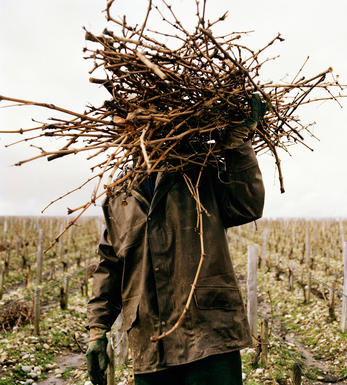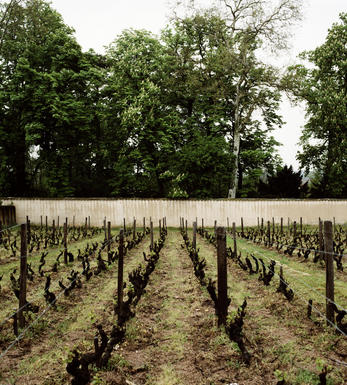
2011 Mazis-Chambertin, Cuvée Madeleine Collignon, Grand Cru, Comte Liger-Belair, Hopsices de Beaune, Burgundy

Critics reviews
Allen Meadows,burghound.com
Mazis-Chambertincomprises 12.59 ha and along with Latricières-Chambertin is considered to be one of the best Gevrey Grands Crus after Chambertin and Clos de Bèze. The wines can be very fine intense and powerful, they age well but are be more generous in their youth than either Chambertin and Clos de Bèze being less structured.
About this WINE

Hospices de Beaune
In 1443 Nicolas Rolin, Chancellor the Duchy of Burgundy began construction of the Hôtel-Dieu in Beaune, site of what was to become a charitable hospital now known as the Hospices de Beaune. Such charitable organisations need endowments to support them and across the years many donors bequeathed vineyards to the Hospices.
In 1859 for the first time the wines of the new vintage from these holdings were sold at auction. Now the hospices de Beaune wine auction is held on the 3rd Sunday in November every year, acting as major moment of Burgundian pageantry and the focal point for launching the new vintage. The Hôtel-Dieu only ceased to function as a working hospital in 1952, while the wines continued to be made and raised on site until the building of a new cuverie on the edge of the town in 1994.
In 2005 the bold move was taken to replace the local auctioneer with Christie’s , led by Burgundy wine expert Anthony Hanson MW. Barrels can be now purchased rather than multiple lots.
The cuvees take their names either from the benefactors, or from famous figures in the history of the Hospices over the last five centuries and more.
Jasper Morris MW, Burgundy Wine Director and author of the award-winning Inside Burgundy comprehensive handbook.

Gevrey-Chambertin
Gevrey-Chambertin is the largest wine-producing village in Burgundy’s Côte d'Or, with its vineyards spilling over into the next door commune of Brochon.
Located in the far north of the Côtes de Nuits above Morey-St Denis, classic Gevrey-Chambertin is typically deeper in colour, firmer in body and more tannic in structure than most red Burgundy. The best can develop into the richest, most complete and long-lived Pinot Noir in the world. This is largely thanks to the iron-rich clay soils, though much depends on whether the vineyard is located on either the steeper slopes (Evocelles, Clos St Jacques) or the flatter, richer soils (Clos Prieur, Combottes).
Whereas in the past there have been numerous underperformers in Gevrey-Chambertin exploiting the reputation of this famous village and its iconic Grands Crus, today there are many fine sources to choose from, and overall quality is higher than ever.
Gevrey-Chambertin’s greatest Grand Cru is named after the field of the monk Bertin (Champ de Bertin). In 1847, Gevrey appended the name of this illustrious vineyard, Chambertin, setting a trend for the other principle villages to follow. Le Chambertin may not be quite as sumptuous as Musigny or Richebourg, or as divinely elegant as La Tâche or Romanée-St Vivant, but it is matched only by the legendary Romanée-Conti for completeness and luscious intensity.
In all, Gevrey boasts an impressive nine Grands Crus, with the name of Chambertin retaining a regal omnipresence throughout its finest vineyard names. The other truly great Grand Cru is Chambertin-Clos de Bèze which has the right to sell its wines simply as ‘Chambertin’, and is the only wine allowed to put the Chambertin name before, rather than after, its own. Situated slightly further up the hill, the wines are fractionally less powerful yet full of sensual charm and finesse.
Quality-wise the next best are generally acknowledged to be Mazis-Chambertin and Latricières-Chambertin. The former is incredibly concentrated and very fine, but its structure is a little less firm than Le Chambertin. Latricières is less about power (although it can be explosively fruity) and more about an entrancing silkiness.
Situated slightly higher up the slope, Ruchottes-Chambertin is impressively rich, stylish and slightly angular. The tiny Griottes-Chambertin, which owes its name to the grill-pan shape of the vineyard rather than the wine’s griotte cherry aroma, is lower down the slope and boasts a velvety texture and rich fruit reminiscent of Chambertin itself. It is generally better than the lighter, although wonderfully fragrant Chapelle-Chambertin and Gevrey’s largest Grand Cru, the pure and seductive (if variable) Charmes-Chambertin.
Gevrey also has some outstanding Premier Crus on the south-east-facing slopes above the town. Les Cazetiers and especially Clos St Jacques produce some exceptional wines. Indeed Armand Rousseau, who pioneered domaine bottling here in the 1930s and is still one of the region’s very best producers, often sells his Clos St Jacques for more than several of his Grand Crus.
Drinking dates for these wines vary, but Grand Crus are generally best from at least 10 to 25 years, Premier Crus from eight to 20 years, and village wines from five to 12 years.
- 315 hectares of village Gevrey Chambertin
- 84 hectares of Premier Cru vineyards (20 in all). The foremost vineyards include Clos St Jacques, Lavaux St Jacques, Combottes, Corbeaux, Cherbaudes, Cazetiers.
- 55 hectares of Grand Cru vineyards: Chambertin, Chambertin Clos de Bèze, Latricières-Chambertin, Ruchottes-Chambertin, Mazis-Chambertin, Charmes-Chambertin, Mazoyères-Chambertin, Chapelle-Chambertin, Griottes-Chambertin..
- Recommended producers: Bachelet, Dugat, Esmonin, Mortet, Rossignol Trapet, Rousseau, Serafin, Bernstein
- Recommended restaurants : Chez Guy (good wine list), Rôtisserie du Chambertin (and Bistro)

Pinot Noir
Pinot Noir is probably the most frustrating, and at times infuriating, wine grape in the world. However when it is successful, it can produce some of the most sublime wines known to man. This thin-skinned grape which grows in small, tight bunches performs well on well-drained, deepish limestone based subsoils as are found on Burgundy's Côte d'Or.
Pinot Noir is more susceptible than other varieties to over cropping - concentration and varietal character disappear rapidly if yields are excessive and yields as little as 25hl/ha are the norm for some climats of the Côte d`Or.
Because of the thinness of the skins, Pinot Noir wines are lighter in colour, body and tannins. However the best wines have grip, complexity and an intensity of fruit seldom found in wine from other grapes. Young Pinot Noir can smell almost sweet, redolent with freshly crushed raspberries, cherries and redcurrants. When mature, the best wines develop a sensuous, silky mouth feel with the fruit flavours deepening and gamey "sous-bois" nuances emerging.
The best examples are still found in Burgundy, although Pinot Noir`s key role in Champagne should not be forgotten. It is grown throughout the world with notable success in the Carneros and Russian River Valley districts of California, and the Martinborough and Central Otago regions of New Zealand.


Buying options
Add to wishlist
Description
Cuvee Collignon is a Hospices de Beaune Cuvee from the sought-after Mazis Chambertin appellation. In 2011 the elevage and bottling were done by the talented Louis Michel Liger Belair, proprietor of Domaine Comte Liger Belair who own the coveted vineyard La Romanee.
Allen Meadows,burghound.com
Mazis-Chambertincomprises 12.59 ha and along with Latricières-Chambertin is considered to be one of the best Gevrey Grands Crus after Chambertin and Clos de Bèze. The wines can be very fine intense and powerful, they age well but are be more generous in their youth than either Chambertin and Clos de Bèze being less structured.
wine at a glance
Delivery and quality guarantee